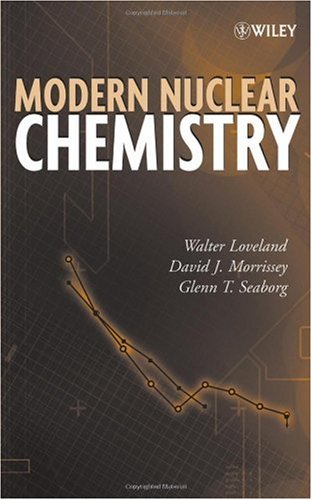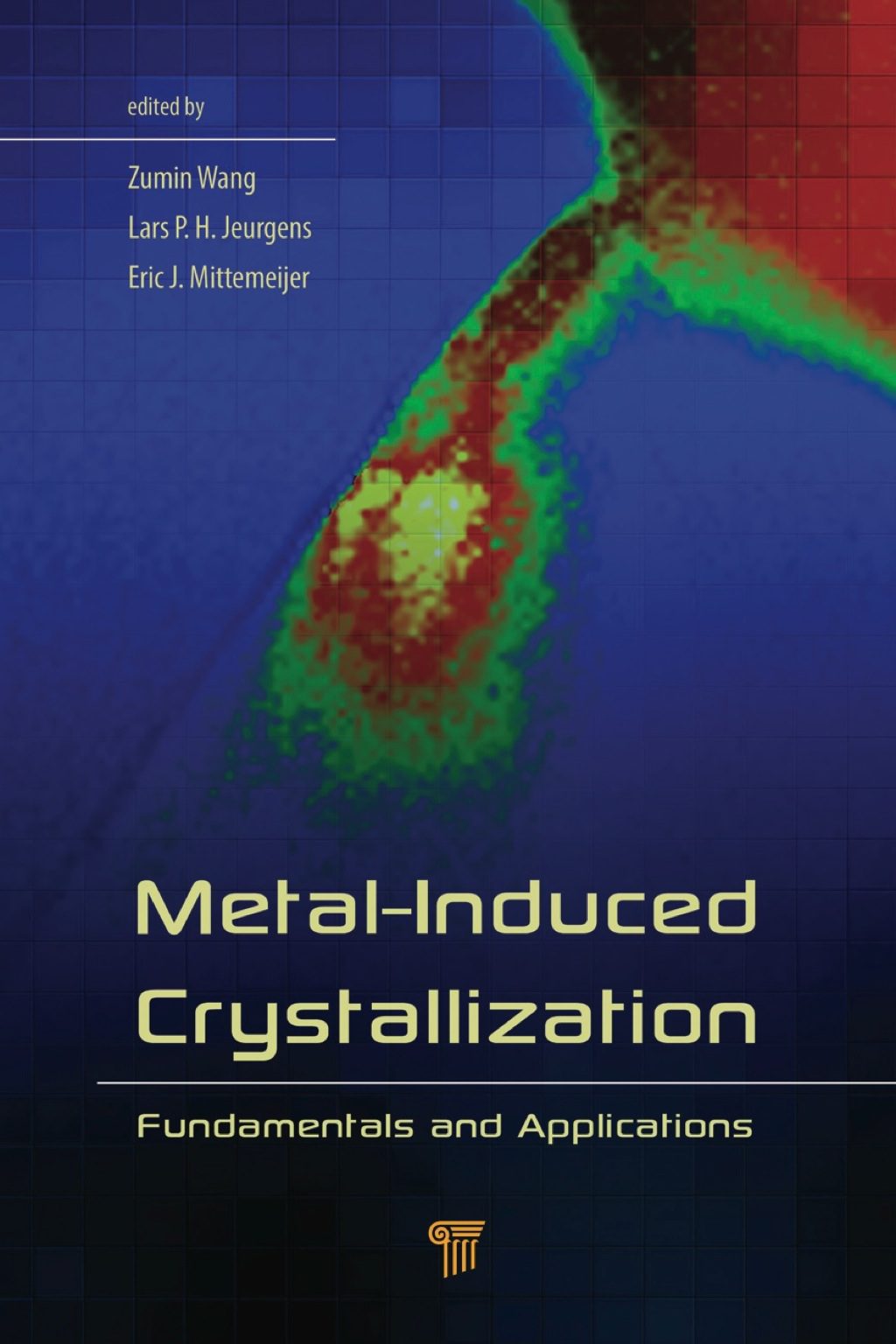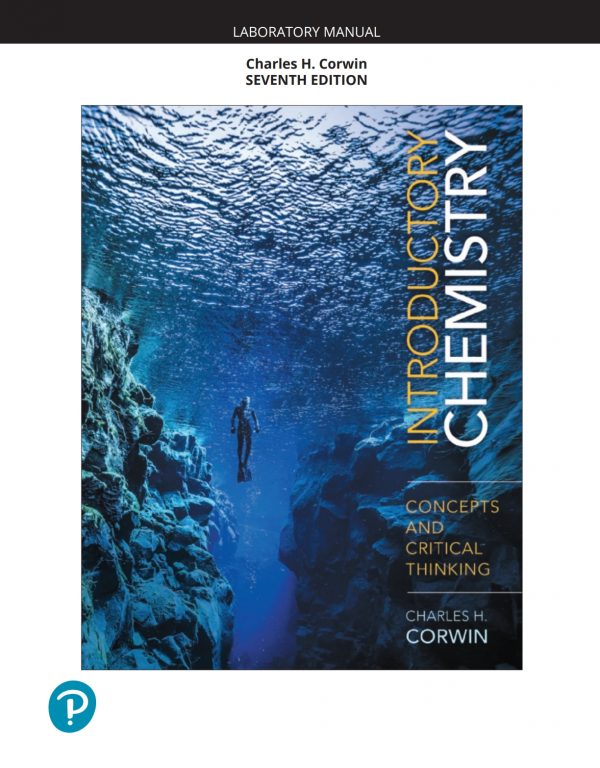Walter D. Loveland, David J. Morrissey, Glenn T. Seaborg0-471-11532-0, 978-0-471-11532-8
Table of contents :
Cover Page……Page 1
Title Page……Page 5
ISBN 0471115320……Page 6
1 INTRODUCTORY CONCEPTS……Page 7
4 RADIOTRACERS……Page 8
7 a DECAY……Page 9
10 NUCLEAR REACTIONS……Page 10
11 FISSION……Page 11
13 ANALYTICAL APPLICATIONS OF NUCLEAR REACTIONS……Page 12
16 NUCLEAR REACTOR CHEMISTRY……Page 13
17 INTERACTION OF RADIATION WITH MATTER……Page 14
19 RADIOCHEMICAL TECHNIQUES……Page 15
APPENDIXES, INDEX……Page 16
PREFACE……Page 17
1.1 Introduction……Page 19
1.2 The Atom……Page 20
1.3.1 Ionization……Page 21
1.3.2 X-ray Emission……Page 22
1.4 The Nucleus Nomenclature……Page 24
1.5 Survey of Nuclear Decay Types……Page 26
1.6.1 Types of Forces in Nature……Page 29
1.6.2 Elementary Mechanics……Page 30
1.6.3 Relativistic Mechanics……Page 31
1.6.4 De Broglie Wavelength, Wave–Particle Duality……Page 35
1.6.6 Units and Conversion Factors……Page 37
1.7 Particle Physics……Page 38
Problems……Page 42
Bibliography……Page 44
CHAPTER 2 NUCLEAR PROPERTIES……Page 47
2.2 Nuclear Masses……Page 48
2.3 Terminology……Page 50
2.4 Binding Energy Per Nucleon……Page 51
2.5 Separation Energy Systematics……Page 53
2.7 Semiempirical Mass Equation……Page 54
2.8 Nuclear Sizes and Shapes……Page 60
2.9.1 Nuclear Angular Momenta……Page 62
2.10.1 Magnetic Dipole Moment……Page 65
2.10.2 Electric Quadrupole Moment……Page 68
Problems……Page 71
Bibliography……Page 74
CHAPTER 3 RADIOACTIVE DECAY KINETICS……Page 75
3.1 Basic Decay Equations……Page 76
3.2 Mixture of Two Independently Decaying Radionuclides……Page 83
3.3 Radioactive Decay Equilibrium……Page 85
3.4 Branching Decay……Page 93
3.5 Natural Radioactivity……Page 95
3.6 Radionuclide Dating……Page 99
Problems……Page 105
Bibliography……Page 107
4.1 Introduction……Page 109
4.2.1 Basic Design Criteria……Page 110
4.2.2 Practical Considerations……Page 113
4.3 Preparation of Radiotracers and Their Compounds……Page 115
4.3.1 Chemical Synthesis……Page 117
4.3.3 Tritium Labeling……Page 118
4.4 Tracing of Physical Process……Page 119
4.5 Chemical Applications of Tracers……Page 120
4.6 Isotope Effects……Page 122
4.7 Biological Applications……Page 125
4.8 Environmental Applications……Page 127
4.10 Nuclear Medicine……Page 131
4.11.1 Direct IDA……Page 140
4.11.2 Inverse IDA……Page 141
4.11.4 Special IDA Techniques……Page 142
4.12 Radiometric Techniques……Page 143
Problems……Page 145
Bibliography……Page 146
5.1 Introduction……Page 147
5.2 Characteristics of the Strong Force……Page 148
5.3 Charge Independence of Nuclear Forces……Page 150
Problems……Page 152
Reference……Page 153
CHAPTER 6 NUCLEAR STRUCTURE……Page 155
6.1 Nuclear Potentials……Page 157
6.2 Schematic Shell Model……Page 158
6.3 Independent Particle Model……Page 170
6.4 Collective Model……Page 172
6.5 Nilsson Model……Page 178
6.6 Nucleus as a Fermi Gas……Page 181
Problems……Page 189
Bibliography……Page 192
CHAPTER 7 a DECAY……Page 195
7.1 Energetics of a Decay……Page 197
7.2 Theory of a Decay……Page 201
7.3 Hindrance Factors……Page 210
7.4 Heavy Particle Radioactivity……Page 211
7.5 Proton Radioactivity……Page 213
Problems……Page 215
Bibliography……Page 216
8.1 Introduction……Page 217
8.2 Neutrino Hypothesis……Page 218
8.3 Derivation of Spectral Shape……Page 221
8.4 Kurie Plots……Page 225
8.5 b-Decay Rate Constant……Page 226
8.6 Electron Capture Decay……Page 231
8.7 Parity Nonconservation……Page 232
8.8 Neutrinos……Page 233
8.9 b-Delayed Radioactivities……Page 234
8.10 Double-b Decay……Page 235
Problems……Page 237
Bibliography……Page 238
9.1 Introduction……Page 239
9.2 Energetics of g Decay……Page 240
9.3 Classification of Decay Types……Page 241
9.4 Electromagnetic Transition Rates……Page 244
9.5 Internal Conversion……Page 250
9.6 Angular Correlations……Page 253
9.7 Mössbauer Effect……Page 259
Problems……Page 265
Bibliography……Page 266
10.1 Introduction……Page 267
10.2 Energetics of Nuclear Reactions……Page 268
10.3 Reaction Types and Mechanisms……Page 272
10.4 Nuclear Reaction Cross Sections……Page 273
10.5 Reaction Observables……Page 282
10.6 Rutherford Scattering……Page 283
10.7 Elastic (Diffractive) Scattering……Page 286
10.8 Direct Reactions……Page 288
10.9 Compound Nucleus Reactions……Page 290
10.10 Photonuclear Reactions……Page 296
10.11 Heavy Ion Reactions……Page 297
10.11.1 Coulomb Excitation……Page 298
10.11.2 Elastic Scattering……Page 299
10.11.3 Fusion Reactions……Page 300
10.11.5 Incomplete Fusion……Page 304
10.11.6 Reactions Induced by Radioactive Projectiles……Page 305
10.12.1 Spallation/Fragmentation……Page 306
10.12.2 Multifragmentation……Page 309
10.12.3 Quark–Gluon Plasma……Page 310
Problems……Page 311
References……Page 314
Bibliography……Page 315
11.1 Introduction……Page 317
11.2.1 Liquid Drop Model……Page 320
11.2.2 Shell Corrections……Page 322
11.2.3 Spontaneous Fission……Page 324
11.2.4 Spontaneously Fissioning Isomers……Page 326
11.2.5 Transition Nucleus……Page 328
11.3.2 Fission Product Mass Distributions……Page 334
11.3.3 Fission Product Charge Distributions……Page 336
11.4 Excitation Energy of the Fission Fragments……Page 340
11.5 Dynamical Properties of the Fission Fragments……Page 343
References……Page 347
12.1 Introduction……Page 349
12.2 Elemental and Isotopic Abundances……Page 350
12.3 Primordial Nucleosynthesis……Page 354
12.4 Stellar Evolution……Page 356
12.5 Thermonuclear Reaction Rates……Page 360
12.6.1 Introduction……Page 362
12.6.2 Hydrogen Burning……Page 363
12.6.3 Helium Burning……Page 366
12.6.4 Synthesis of Nuclei with A < 60……Page 367
12.6.5 Synthesis of Nuclei with A > 60……Page 369
12.7.1 Introduction……Page 372
12.7.2 Expected Solar Neutrino Sources, Energies, and Fluxes……Page 373
12.7.3 Detection of Neutrinos……Page 375
12.7.5 Solution of the Problem—Neutrino Oscillations……Page 377
12.8 Synthesis of Li, Be, and B……Page 379
Problems……Page 380
Bibliography……Page 381
13.1.1 Basic Description of Method……Page 383
13.1.2 Advantages and Disadvantages of Activation Analysis……Page 384
13.1.3 Practical Considerations in Activation Analysis……Page 386
13.1.4 Applications of Activation Analysis……Page 390
13.2 Particle-Induced X-ray Emission……Page 391
13.3 Rutherford Backscattering (RBS)……Page 394
Problems……Page 397
Bibliography……Page 398
CHAPTER 14 REACTORS AND ACCELERATORS……Page 401
14.1.1 Neutron-Induced Reactions……Page 402
14.1.2 Neutron-Induced Fission……Page 405
14.1.3 Neutron Inventory……Page 406
14.1.4 Light Water Reactors……Page 408
14.2 Neutron Sources……Page 413
14.3 Neutron Generators……Page 414
14.4.1 Ion Sources……Page 415
14.4.2 Electrostatic Machines……Page 417
14.4.3 Linear Accelerators……Page 421
14.4.4 Cyclotrons, Synchrotrons, and Rings……Page 424
14.5 Charged Particle Beam Transport and Analysis……Page 430
14.6 Radioactive Ion Beams……Page 435
14.7 Nuclear Weapons……Page 439
Problems……Page 444
Bibliography……Page 445
15.2 Limits of Stability……Page 447
15.3 Element Synthesis……Page 449
15.4 History of Transuranium Element Discovery……Page 456
15.5 Superheavy Elements……Page 465
15.6 Chemistry of the Transuranium Elements……Page 467
15.7 Environmental Chemistry of the Transuranium Elements……Page 475
Problems……Page 480
References……Page 481
Bibliography……Page 482
16.1 Introduction……Page 483
16.2 Fission Product Chemistry……Page 484
16.3.3 Uranium Compounds……Page 488
16.3.4 Uranium Solution Chemistry……Page 489
16.4.1 Mining and Milling……Page 490
16.4.3 Enrichment……Page 493
16.4.4 Fuel Fabrication……Page 496
16.5.1 Properties of Spent Fuel……Page 497
16.5.2 Fuel Reprocessing……Page 499
16.6.1 Classification of Radioactive Waste……Page 501
16.6.2 Amounts and Associated Hazards……Page 502
16.6.3 Storage and Disposal of Nuclear Waste……Page 503
16.7 Chemistry of Operating Reactors……Page 510
16.7.2 Corrosion……Page 511
Problems……Page 512
References……Page 513
Bibliography……Page 514
17.1 Introduction……Page 515
17.2 Heavy Charged Particles (A 1)……Page 517
17.3 Electrons……Page 532
17.4 Electromagnetic Radiation……Page 536
17.4.1 Photoelectric Effect……Page 538
17.4.2 Compton Scattering……Page 540
17.4.3 Pair Production……Page 542
17.5 Neutrons……Page 544
17.6 Radiation Exposure and Dosimetry……Page 548
Problems……Page 551
Bibliography……Page 553
CHAPTER 18 RADIATION DETECTORS……Page 555
18.1.1 Gas Ionization Detectors……Page 558
18.1.2 Semiconductor Detectors (Solid-State Ionization Chambers)……Page 566
18.2 Scintillation Detectors……Page 576
18.3 Nuclear Track Detectors……Page 582
18.4 Nuclear Electronics and Data Collection……Page 583
18.5 Nuclear Statistics……Page 585
18.5.1 Rejection of Abnormal Data……Page 592
Problems……Page 594
Bibliography……Page 595
CHAPTER 19 RADIOCHEMICAL TECHNIQUES……Page 597
19.1 Unique Aspects of Radiochemistry……Page 598
19.3 Targetry……Page 602
19.4 Measuring Beam Intensity and Fluxes……Page 607
19.5 Recoils, Evaporation Residues (EVRs), and Heavy Residues……Page 609
19.6.1 Precipitation……Page 613
19.6.2 Solvent Extraction……Page 614
19.6.3 Ion Exchange……Page 617
19.6.5 Rapid Radiochemical Separations……Page 620
19.7.1 Introduction……Page 621
19.7.2 Blanks……Page 622
19.7.4 Low-Level Counting—Details……Page 623
19.7.5 Limits of Detection……Page 626
Problems……Page 627
References……Page 628
Bibliography……Page 629
APPENDIX A FUNDAMENTAL CONSTANTS AND CONVERSION FACTORS……Page 631
APPENDIX B NUCLEAR WALLET CARDS……Page 635
APPENDIX C PERIODIC TABLE OF ELEMENTS……Page 659
APPENDIX D LIST OF ELEMENTS……Page 661
APPENDIX E ELEMENTS OF QUANTUM MECHANICS……Page 663
B……Page 685
F……Page 686
N……Page 687
S……Page 688
X,Y,Z……Page 689
COLOR PLATES……Page 691
Back Page……Page 707







Reviews
There are no reviews yet.